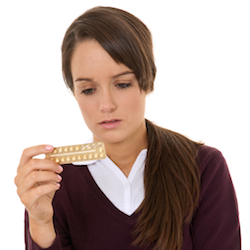Day: June 9, 2014
Drop Diastolic & Systolic Blood Pressure with Yoga
Lifestyle modification is a cornerstone of hypertension (HPT) treatment, yet most recommendations currently focus on diet and exercise and do not consider stress reduction strategies. Yoga is a spiritual path that may reduce blood pressure (BP) through reducing stress, increasing parasympathetic activation, and altering baroreceptor sensitivity; however, despite reviews on yoga and cardiovascular disease, diabetes, metabolic syndrome, and anxiety that suggest yoga may reduce BP, no comprehensive review has yet focused on yoga and HPT. By Anupama Tyagi, MA, PhD(c) and Marc Cohen MBBS(Hons), PhD, BMedSc(Hons), FAMAC, FICAE, published Alternative Therapies in Health Medicine, Vol. 20, No. 10.
Are Today’s Adolescents Tomorrow’s Hip-Fracture Patients?
The seeds of the pernicious disease osteoporosis are sown during adolescence, when the skeleton is most active in absorbing dietary calcium and building up nearly all the bone mass that will carry the teenager throughout life. Along with calcium, both vitamin D and vitamin K (particularly vitamin K2) are essential for bone formation. Little research has been done to evaluate adolescents’ vitamin K requirements for optimal bone development, but recent papers indicate that vitamin K status plays an important role in children’s bone health, and that bone metabolism requires significantly more vitamin K than blood coagulation. Calcium and vitamin D intake is well understood in the medical community, though fewer physicians are aware of the importance of vitamin K2, and little has changed with respect to dietary intake. By Karan Baucom, MD; Lara Pizzorno, MA; and Joseph Pizzorno, ND, published in the J of Restorative Medicine, Osteoporosis: The Need for Prevention and Treatment.
Clues Connect Estrogen and Autoimmune Disease
There is a phenomenon that scientists have yet to solve, regardless of whether a woman lives in the United States, where medical care is relatively good, or third world nations, where medical care is often scarce: women are less likely to die from infectious diseases than men. The lower death rate has been attributed to a beneficial, yet unexplained effect estrogen has on the immune system. Females of child-bearing age are more resistant to infectious disease and have an increased risk of systemic lupus erythematosus (SLE). This study hypothesized that estrogen-induced gene expression could establish an immunoactivated state which would render enhanced defense against infection, but may be deleterious in autoimmune development.By Nicholas A. Young, Lai-Chu Wu, et al, Estrogen modulation of endosome-associated toll-like receptor 8: An IFNα-independent mechanism of sex-bias in systemic lupus erythematosus. Clinical Immunology, March 2014







